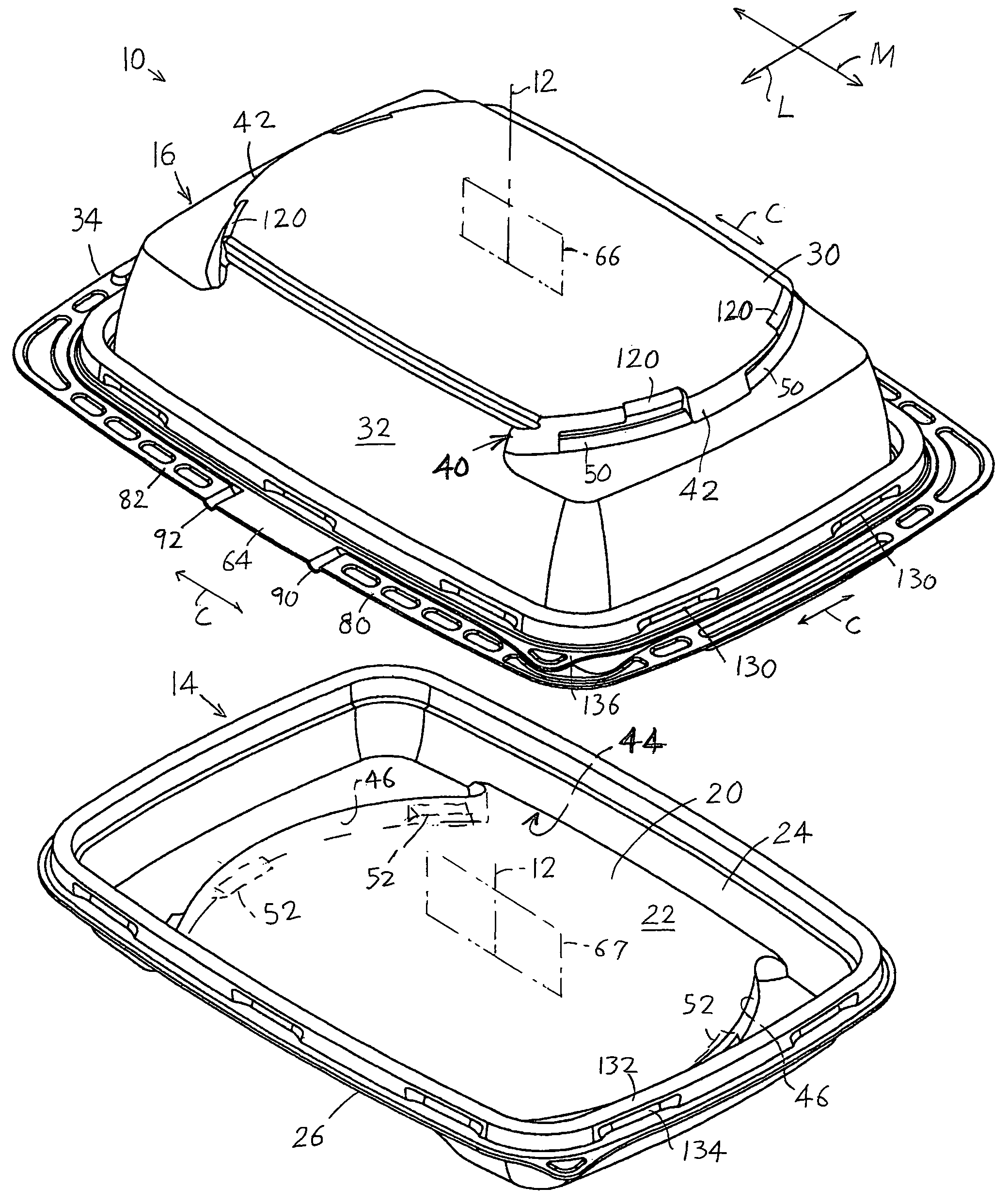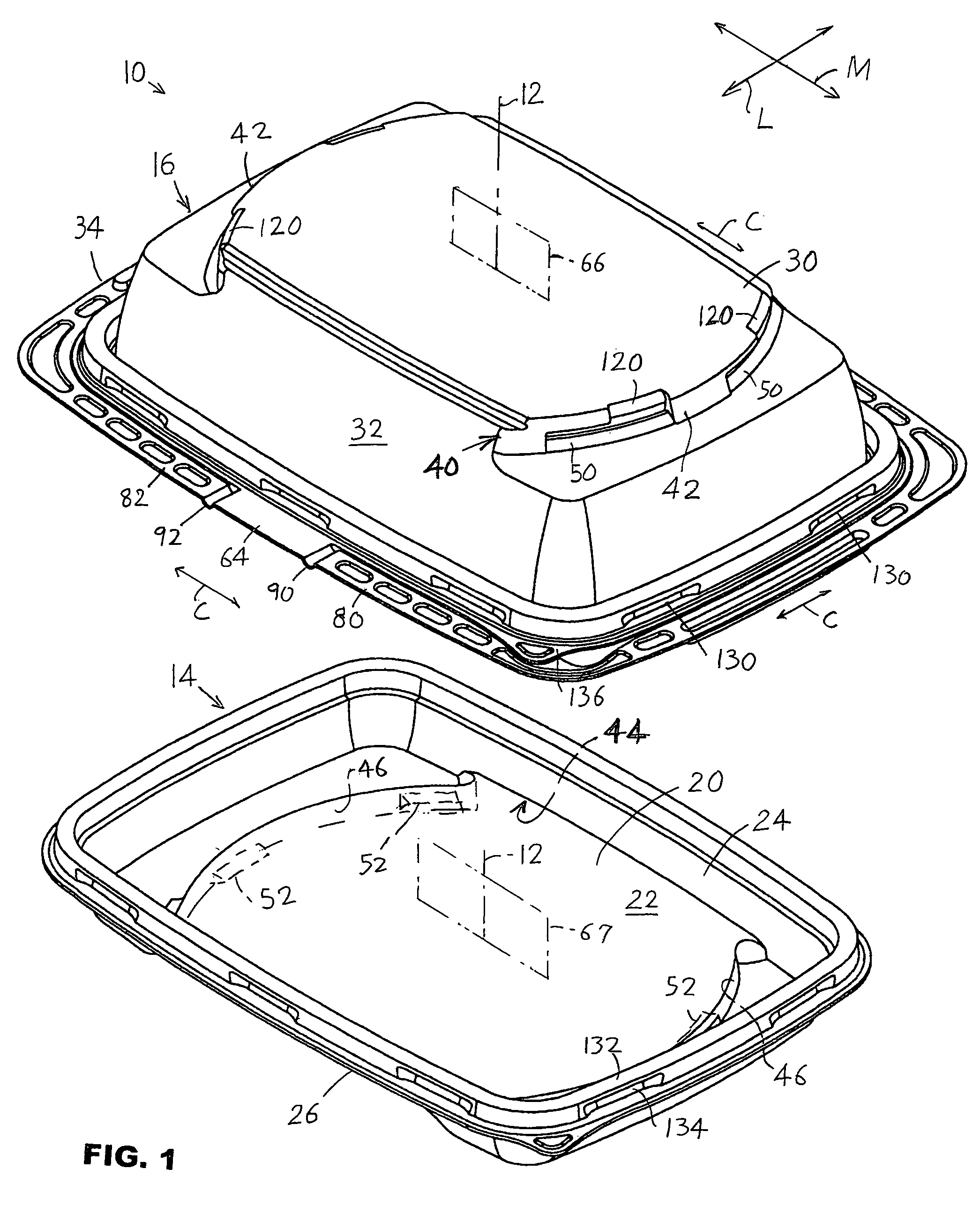Stackable twist-top container system
a container system and twist-top technology, applied in the direction of containers preventing decay, sealing, transportation and packaging, etc., can solve the problems of stack collapse, disturbing the twisting of the handle,
- Summary
- Abstract
- Description
- Claims
- Application Information
AI Technical Summary
Benefits of technology
Problems solved by technology
Method used
Image
Examples
Embodiment Construction
[0039]FIG. 1 shows a container 10 that has a vertical axis 12 and that has a base element 14 and a lid, or cover element 16. The base element or base 14 has a base cavity 20 for holding food, and includes a base stacking bottom wall 22, base side walls 24 that extend generally upward from the bottom wall, and a base rim portion 26 at the top of the side walls. The cover element or cover has a top stacking wall 30, side walls 32 that extend generally downward from the top wall, and a cover rim portion 34 that extends around the bottom of the side walls. The cover top wall 30 includes a large upward protrusion 40 with end walls 42 that are curved about the container vertical axis 12. The base bottom wall has a large upward receptacle 44 with end walls 46 that are also curved about the vertical axis 12. This allows the protrusion 40 of a lower container of a stack, to fit partially into a receptacle of a next higher container and turn about the axis 12. The protrusion and receptacle ar...
PUM
 Login to View More
Login to View More Abstract
Description
Claims
Application Information
 Login to View More
Login to View More - R&D
- Intellectual Property
- Life Sciences
- Materials
- Tech Scout
- Unparalleled Data Quality
- Higher Quality Content
- 60% Fewer Hallucinations
Browse by: Latest US Patents, China's latest patents, Technical Efficacy Thesaurus, Application Domain, Technology Topic, Popular Technical Reports.
© 2025 PatSnap. All rights reserved.Legal|Privacy policy|Modern Slavery Act Transparency Statement|Sitemap|About US| Contact US: help@patsnap.com



